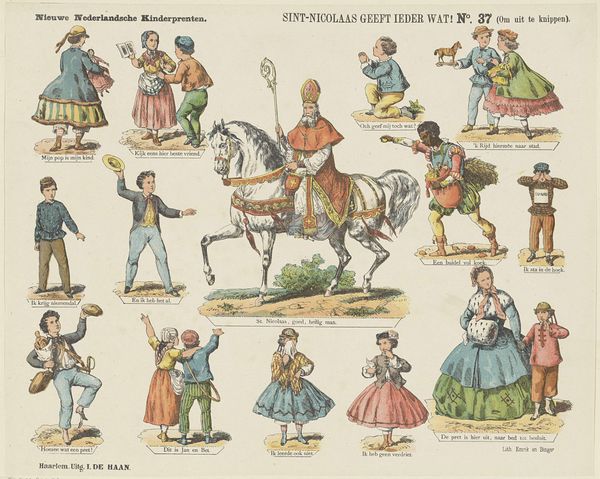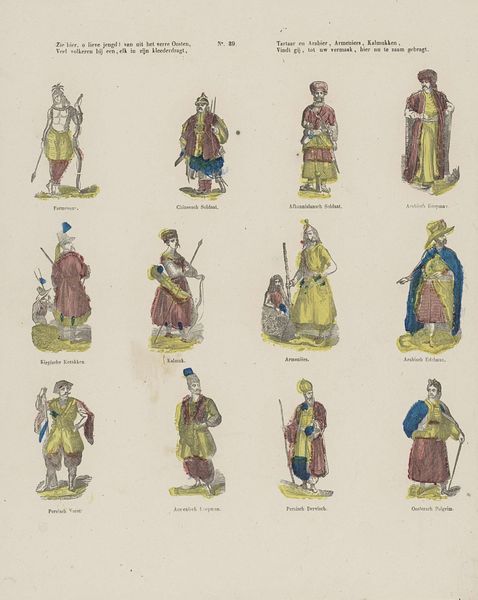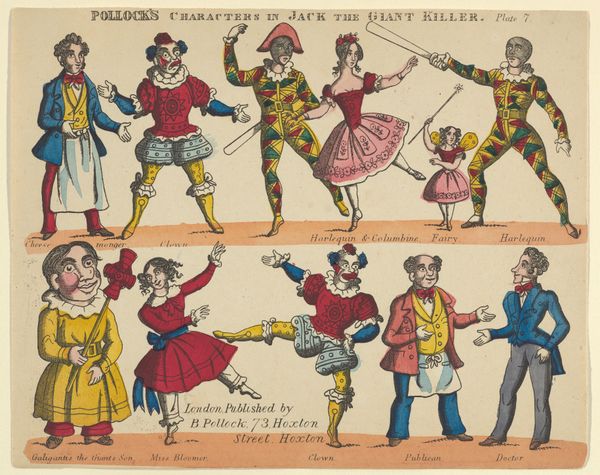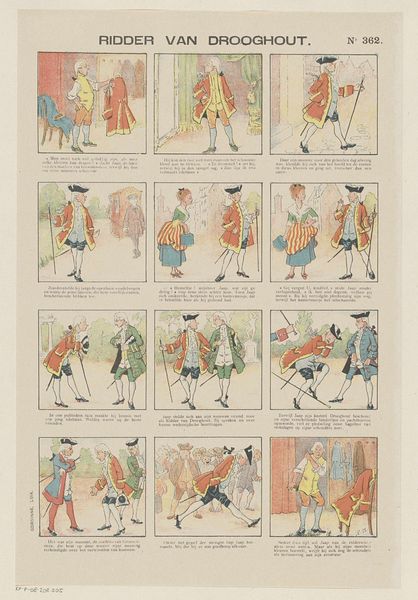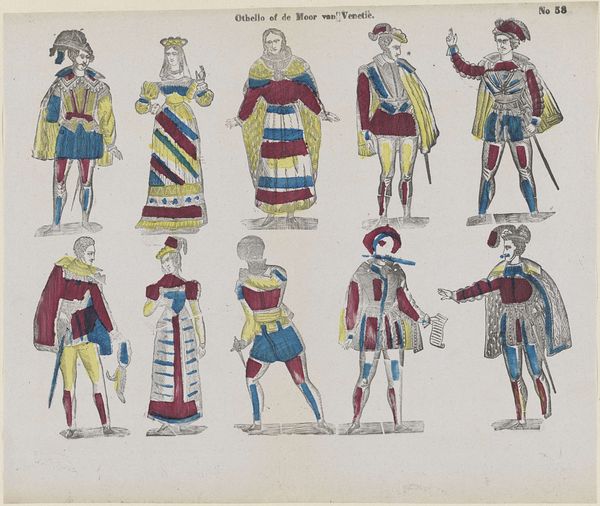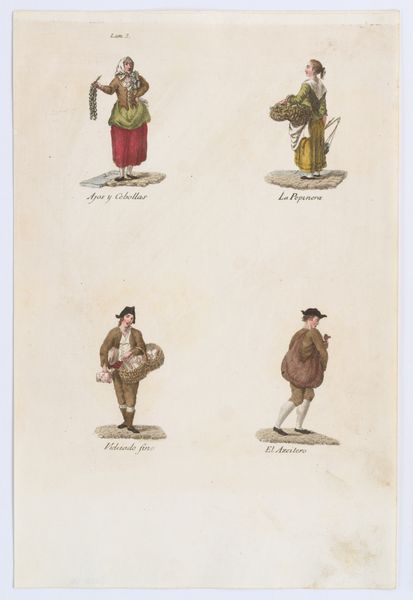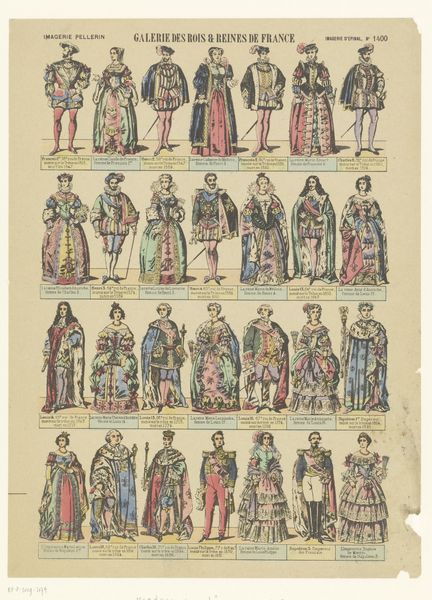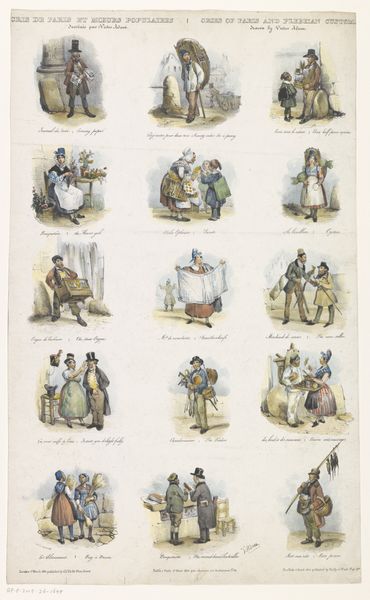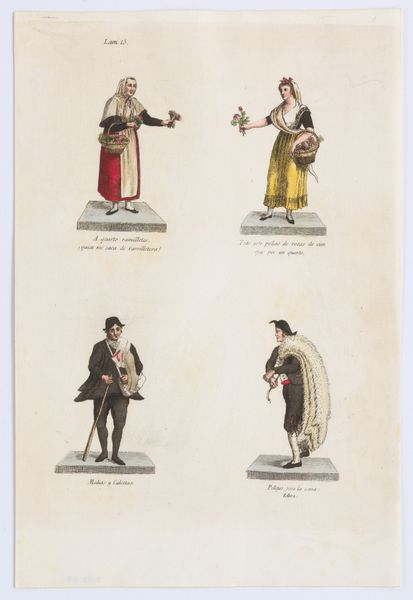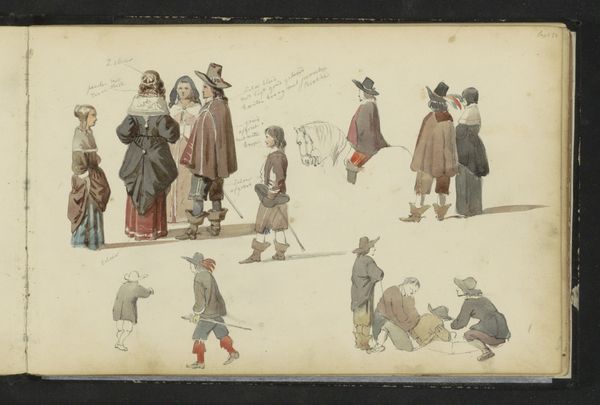
Printing proof of cards, from National Dances (N225, Type 2) issued by Kinney Bros. 1889
0:00
0:00
Dimensions: Sheet: 2 3/4 × 1 1/2 in. (7 × 3.8 cm)
Copyright: Public Domain
Curator: It feels like a charming, colorful puzzle. All these dancing figures, each so precisely rendered within their little grid. Editor: Precisely! What we're seeing is a printing proof from 1889 created by the Kinney Brothers Tobacco Company. It's a study for cigarette cards, part of their "National Dances" series, now residing at The Met. The medium includes drawing, colored pencil, and print. Curator: So, it's advertising ephemera, elevated almost to art through its design. I see a grid of figures representing various nationalities, or perhaps stereotypical visions of them, frozen mid-dance. The colours, the line work – it’s all incredibly detailed for something meant to be tossed in with tobacco. Editor: Precisely. Think about the process: artists creating original drawings, draftsmen preparing the designs for mass production, and then, the factory workers churning them out. The company was taking cultural references, reducing them to easily consumable tokens and, of course, commercial advantage. Curator: Right, because that vibrant, romantic portrayal certainly isn't reflective of most workers' experiences. Editor: Of course not! It is escapism, consumerism, exoticism distilled into these cards. How were the original images selected and translated? Whose stories do these dancers actually represent, and who profits from their representation? The visual appeal, certainly a consideration, obscures some complex questions of labor and representation. Curator: Well, forgetting the social context, I have to admit I’m drawn to how the colors define each dancer. Notice the way the artist uses distinct color palettes to differentiate national identities and even emphasize their movements. Editor: That’s precisely where formalism falters, my friend! A formalist’s approach risks overlooking those complex systems of power at play in the artwork’s production and consumption. This ‘harmless’ colourful scene played an active role in a network of production which, you might say, obscured certain global and cultural realities. Curator: It’s a good reminder that every visual delight probably obscures complex realities and relationships that are well worth interrogating. Editor: And in turn, seeing those shapes, patterns, and colours invites questions on the making of its impact within its place and time, don't you think?
Comments
No comments
Be the first to comment and join the conversation on the ultimate creative platform.

